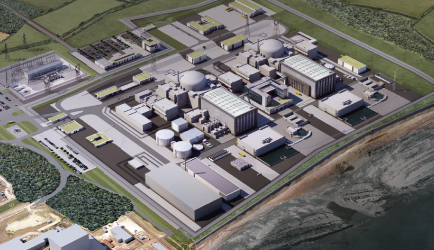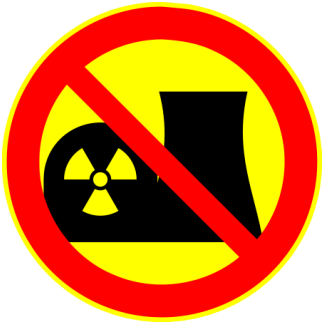
Blog
-
Geiger Readings for Mar 22, 2015
Ambient office = 114 nanosieverts per hourAmbient outside = 100 nanosieverts per hourSoil exposed to rain water = 108 nanosieverts per hourJalapeno pepper from Central Market = 101 nanosieverts per hourTap water = 129 nanosieverts per hourFiltered water = 119 nanosieverts per hour -
Nuclear Reactors 343 – Squabbling Over Hinkley Point C Project In U.K. Continues
For a blogger on nuclear energy, the Hinkley Point C project in Britain is a gift that just keeps giving. There are many different groups, issues, nations, etc. that are involved in Hinkley Point C. New things keep coming to light and new things keep happening that need to be updated. Basically, the U.K. has contracted with the French company EDF to build two nuclear power reactors at Hinkley Point. EDF and the U.K. could not finance the whole project so they are cutting a deal with the Chinese for about one third ownership. This has upset some groups in the European Union and in the U.K. The U.K. is going to be shutting down most of their existing nuclear reactors and some of their old coal power plants in the next ten years. These power generation sources will have to be replaced by new power generation and Hinkley Point C is expected to play a major role in that replacement. The lower limit for the estimated cost for the two new reactors is around twenty five billion dollars. This is far beyond the suggested price of six billion dollars for economically competitive nuclear power reactors.
One big concern about the Hinkley Point C project is the fact that the U.K. government is going to guarantee the owners of the two new reactors a price for their electricity that is three times the current price being paid by U.K. ratepayers. This guarantee extends for thirty five years after the new reactors are turned on. The deal provides for subsidies up to sixty billion dollars and includes government guarantees with respect to nuclear waste disposal and accident insurance. The new reactors don’t have to start producing electricity before 2033.
Should the new reactors be shut down in the future for any reason other than safety or security, then there is a provision for payments to EDF of up to thirty billion dollars. This has been referred to as a “poison pill” provision in the contract. Supporters of the project say that guaranteed prices for electricity and provisions for waste disposal, insurance, and unexpected shutdowns of new nuclear power reactors are standard in contracts of this type. They point out that there will be twenty five thousand constructions jobs and that the new reactors are critical for replacing retired energy sources. Critics say that the poison pill virtually guarantees that there is zero risk for EDF and backers such as the Chinese. They feel that the high price for construction of the two new reactors, the price guarantee for the electricity and the generous subsidies are already overly generous to the owners of the new reactors without the poison pill.
In 2007, EDF said that the new reactors would be generating electricity by 2017. After repeated delays, they now say that the new reactors will start generating electricity in 2025. As mentioned before, the contract allows the start date to be pushed back as far as 2033. Two other reactors based on the EDF design for the Hinkley Point C reactors are way behind schedule and way behind budget. The final commitment of EDF to the project has still not been signed and the Chinese contract has also not been finalized.
Prof Catherine Mitchell, an energy policy expert at the University of Exeter said that,”This is a dreadful agreement for the nation. The government is already paying a high price, index-linked for an incredibly long 35 years. This should be more than sufficient for a professional, business contract. ” and she also said, “Energy economics are changing rapidly and so the momentum is towards decentralized, smart and flexible energy systems. It is moving away from large, inflexible power plants like Hinkley. If it ever gets funded, it will be a white elephant before it is even finished and this government, with this £22bn ‘poison pill’, will have tied the next generation into paying for it, for no reason that I can understand. If it is simply political saving face, it really is pitiful.”
Artist’s concept of Hinkley Point C reactors:
-
Geiger Readings for Mar 21, 2015
Ambient office = 98 nanosieverts per hourAmbient outside = 100 nanosieverts per hourSoil exposed to rain water = 90 nanosieverts per hourPurple potato from Central Market = 75 nanosieverts per hourTap water = 77 nanosieverts per hourFiltered water = 69 nanosieverts per hour -
Geiger Readings for Mar 20, 2015
Ambient office = 113 nanosieverts per hourAmbient outside = 77 nanosieverts per hourSoil exposed to rain water = 73 nanosieverts per hourRed bell pepper from Central Market = 89 nanosieverts per hourTap water = 111 nanosieverts per hourFiltered water = 100 nanosieverts per hour -
Geiger Readings for Mar 19, 2015
Ambient office = 94 nanosieverts per hourAmbient outside = 87 nanosieverts per hourSoil exposed to rain water = 89 nanosieverts per hourYellow bell pepper from Central Market = 73 nanosieverts per hourTap water = 118 nanosieverts per hourFiltered water = 106 nanosieverts per hourKing salmon – Caught in USA = 78 nanosieverts per hour -
Nuclear Reactors 342 – New Gallup Poll Shows That A Majority Of U.S. Citizens Reject The Use Of Nuclear Power
I have blogged about all the problems with nuclear power that make it a bad choice for generating electricity. There are many different problems including corruption, incompetence, bad design, lack of adequate regulations, cost overruns, environmental degradation, public health threats, flooding, sea level rise, warming oceans, terrorist and war threats, etc. Recently I listed forty reasons to reject nuclear power. Since then, I have found another five reasons. Sadly enough, even with all these serious concerns, nuclear power is still on the table and some countries, especially China, are making massive investments in reactor construction. One of the reasons for this resistance to the facts about nuclear power is that there is so much money in the construction of nuclear reactors that there is plenty for anyone involved. Greed seems to trump everything else. However, change is on the horizon, in the U.S. at least.
The Gallup polling organization has been tracking public attitudes toward nuclear power in the U.S. since 1994. Before this year, the number of people supporting use of nuclear power was always higher than the number of people opposing it. The high point in polling on public acceptance of nuclear power in the U.S. was in 2010 when sixty two percent of the people polled supported nuclear power. Just before the major nuclear disaster at Fukushima, the support was at fifty seven percent. By 2015, the support had declined to fifty one percent. Now, the most recent poll shows that only forty four percent of U.S. citizens support nuclear power. So at this point, a majority of people in the U.S. do not support nuclear power. The margin of error for the latest poll is four percent. One more major nuclear accident anywhere in the world and the support will sink even further. This is one of the considerations that politicians and investors will take into account when considering new nuclear project proposals.
Gallup believes that low energy prices for oil, gasoline and natural gas have been a major contributing factor to the decline in support for nuclear power. In addition, the decline in price for alternative sustainable energy sources has also contributed. The massive upfront investment in nuclear power cannot be justified when there are other cheaper energy sources available. With cheaper low-carbon alternative energy sources, environmental concerns are also contributing to rejection of nuclear power. Republicans are more supportive of nuclear power than Democrats but even the Republican support in the latest polls was only forty six percent.
Although several new power reactors are being built in the U.S., this drop in public support bodes ill for the future of nuclear power in the U.S. Continuing problems with leakage of radioactive materials from power plants and debates over what to do with all the spent nuclear fuel that is piling up at the nuclear power stations also contribute to a decline of support for nuclear power. In the end I think that it will be a combination of public rejection and investor skepticism that will sink nuclear power once and for all, not only in the U.S. but all over the world.





